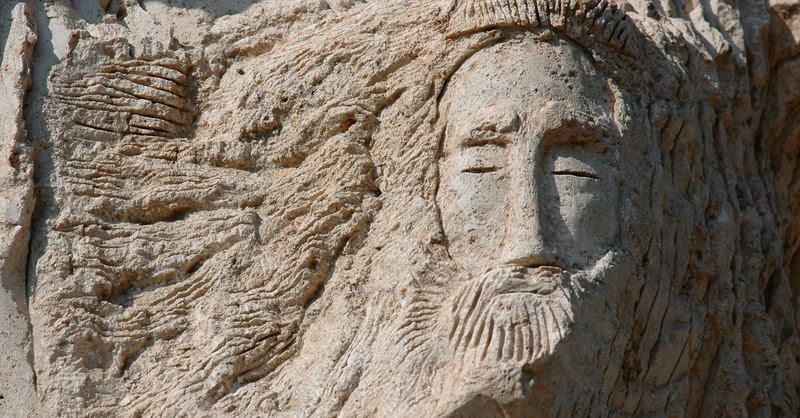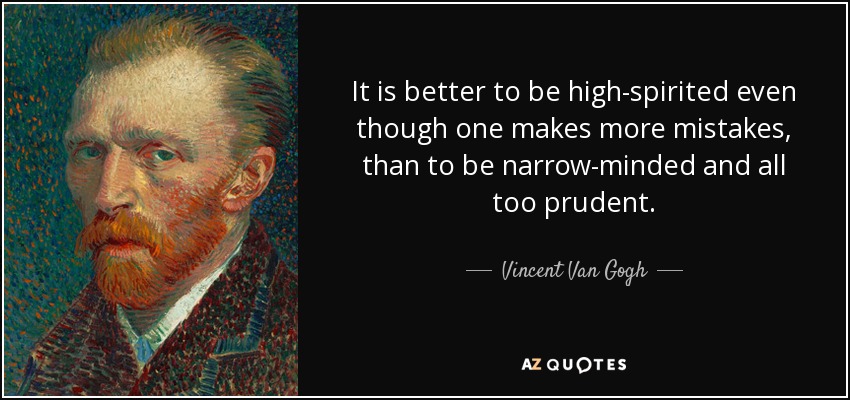* * * *

* * * *
A head’s up. The punchline for the headline above would be, “At least it wouldn’t be as bad as living in Russia!” That’s the impression I got after starting to read my latest Arkady Renko novel. (Tatiana, one of a series of “life in Russia” novels by Martin Cruz Smith.) There’s more on dealing with a possible second Trump term as president below, but first a word about those Renko novels. They really make me appreciate living in the United States.
I started off years ago reading Gorky Park, the book. Then watched the 1983 film, twice. (With William Hurt as Arkady, along with Lee Marvin and Brian Dennehy). I later bought the DVD and watched it a few more times. (A depressing but fascinating look at life in Russia as it used to be.) The book came out in 1981, the film in 1983, which gives an idea how far back my attachment goes. Some time later I bought the book Polar Star. (Published in 1989.) More on that later.
Then a few days ago, I passed through the Large Print section of a local library. I came across another Renko novel, Tatiana, published in 2013. It tells of Renko having survived “the cultural journey from the Soviet Union to the New Russia, only to find the nation as obsessed with secrecy and brutality as was the old Communist regime.” Apparently things hadn’t changed much.
Which brings us back to a “maybe second Trump:” I must confess – I “do not deny, but confess” – to some sleepless nights about that. Sleepless nights at the thought of him winning the 2024 presidential election. To be sure, that seems far-fetched at this point. Or maybe not. The point is, with a second Trump term America might start looking more like Arkady Renko’s Russia.
Death threats, reporters disappearing, broken legs, riots. At least that’s what some think…
Many Republicans say Trump can’t win, but there are those national polls. Polls showing that even with his baggage and indictments, Trump is running neck and neck with President Biden. And it’s virtually certain he’ll be the Republican nominee. So the choice will be him, or one person running against him. (Not to mention the nightmare possibility of a third-party candidate forcing the election into the House of Representatives.*) And for some reason President Biden remains unpopular. (“Why?”) One recent poll showed him with a 41.2 percent approval rating but a 54.9 percent disapproval rating. All of which means Trump has theoretic 50-50 shot at re-election.
For a bit of comfort, there’s the poll saying 53% of US voters say they wouldn’t vote for Trump. (Another poll puts that figure at a whopping 64% of Americans. “53% of Americans said they ‘definitely’ would not support him and another 11% said they ‘probably’ would not support him.) Still, the best policy seems to be hope for the best, but prepare for the worst.
Which I explored, in a way, in an August 2019 post, On “why it might be better…” (Gasp!)
The “gasp” was for the idea that it might have been better if Trump had won back in 2020. (You know, without inciting the January 6 riot and shredding the Constitution.) For one thing, in the years between 2020 and 2024, if he lost, “he might just wreak more havoc to American democracy than he could as president.” Which has certainly been true. He lost, but still manages to wreak havoc to American democracy. The flip side? Massive Trump Fatigue.
At any rate, I asked – back in August 2019 – if it wouldn’t be “better to get it over with?” To look forward to getting rid of Trump once and for all, in 2024? Then too, if he did get re-elected in 2020, he would immediately become a Lame Duck. Such politicians – not eligible to run again – often “lose their credibility and influence” on fellow politicians. Also, “Projects uncompleted may fall to the wayside as their influence is greatly diminished.” (Like “building a wall?”)
On the other hand, since a lame duck president doesn’t need to worry about being re-elected, he can focus more on leaving a a good legacy. (He doesn’t have to worry about “catering to his wacko base.”) One example from history was Ronald Reagan. When he got elected to a second term he signed an arms control treaty with Soviet leader Mikhail Gorbachev, “despite his opposition to arms control” during his first term. He changed his hardline stance.
Another example was P.T. Barnum. Famous for saying “there’s a sucker born every minute” – as a circus entrepreneur, if not shyster – he later ran for public office. Surprise of surprises, he became a humane, effective and ethical politician. He served two terms in the Connecticut legislature in 1865, as a Republican. On the subject of slavery and blacks voting…
Barnum spoke before the legislature and said, “A human soul, ‘that God has created and Christ died for,’ is not to be trifled with. It may tenant the body of a Chinaman, a Turk, an Arab or a Hottentot – it is still an immortal spirit.”
From there he got elected Mayor of Bridgeport, CT in 1875, and “worked to improve the water supply, bring gas lighting to streets, and enforce liquor and prostitution laws.” And he was instrumental in starting Bridgeport Hospital in 1878, becoming its first president.
Like I said, surprise of surprises. And it’s possible – though I wouldn’t bet the farm on it – that something like that might happen if Trump gets re-elected. Still, even if he did get re-elected things here will still be better than living in Russia. As shown by those Arkady Renko novels.
The thing that first impressed me about Renko was his ability to survive. For example, in Gorky Park he starts out as a dogged – if not quite respected – Moscow homicide investigator. Respected in a sense as the son of famous World War Two General, Stalin‘s Favorite General celebrated as “The Butcher of Ukraine.” But dogged in the sense that he’s made an enemy of the KGB. He “exposes corruption and dishonesty on the part of influential and well-protected members of the elite, regardless of the consequences.”
One such consequence? His partner is shot to death by members of the KGB, during the investigation into three mutilated bodies, found in the aforementioned Gorky Park. (Like Dirty Harry, whose on-screen partners “were famously short-lived,” it can be fatal to be close to Renko.)
Also in that first novel he gets betrayed by the man he trusts and works for, the powerful prosecutor Iamskoy. Iamskoy is really secretly working with Jack Osborne. (A corrupt and corrupting American played to perfection by Lee Marvin.) Renko ends up killing Iamskoy and Osborne’s henchman, but suffers a near-fatal stomach wound. He “recuperates” – in a KGB-run asylum – where he is regularly interrogated, and given various injections to make him talk. (Or just for the pure pleasure of watching him squirm.) State doctors “diagnose” him with Pathoheterodoxy Syndrome, “a fictional mental illness” symptomized by misguided arrogance. A side note, while the syndrome is fictional, “the incident also alludes to the very real Soviet practice of diagnosing dissidents with ‘sluggish schizophrenia,’ and of forcibly treating them with psychotropic drugs.”
He eventually escapes, miraculously, but is forced to flee ever-eastward, to Siberia, staying just one step ahead of the KGB. (The farther east he goes, the fewer thugs get dispatched to hunt him down). In Polar Star, Renko reaches the end of his rope, literally and metaphorically.
After uncovering corruption in high places (in Gorky Park), Renko is dismissed from his job as a Moscow police investigator and is forced to accept a variety of menial jobs in remote parts of the Soviet Union. [Like Siberia.] Finally, he finds himself gutting fish on a factory ship in the Bering Sea, in part to hide from the KGB, who have tried to kill him.
Then there’s a murder on board. Renko is forced – reluctantly – to investigate, but his insistence on learning the truth, “rather than allowing her murder to be covered up as a suicide,” earns him more death threats, by the on-board KGB stooge and all but one or two other workers. But like I said, he manages to survive, in very trying circumstances.
Like we might find useful, if there is a second Trump term.
But from Polar Star we move on to Tatiana, which lists some of his miraculous escapes.
[Renko’s doctor had – so far – treated him] for a gunshot wound, a bullet to the brain that should have killed him and would have if the round had not been degraded by time. Instead of plowing a causeway through Arkady’s head, bits had lodged between the skull and the covering of the brain, and caused bleeding enough to justify drilling drain holes and lifting the lid of his head.” Because of all that the doctor had “taken a proprietary interest in his health.”
And that’s not to mention the stabbing-by-ice pick in Gorky Park, in a virtual cesspool of a Moscow fountain that got him taken to the KGB-run “asylum.” Where a series of “treatments” like painful spinal injections got him diagnosed with “Pathoheterodoxy Syndrome.”
But as interesting as the Tatiana novel has been – so far as I’ve gotten – it’s Polar Star that’s been the more interesting. Mostly because in it, Renko’s world has been turned upside down. Like America will be if Trump gets re-elected in 2024.
As a respected Moscow homicide detective, Renko had long been “on top.” And sent many men to prison. In Polar Star, one of them, Karp Korobetz, is now a Top Dog. A highly respected trawl master, and a favorite of the captain and crew alike. And he swears to kill Renko in revenge. “You’ll never get off this ship alive.” Renko on the other hand is now among the onboard lowest of the low. He works on the slime line, in the lowest bowels of the ship. But survive he does, with tricks and techniques we might all need to learn, possibly starting on Election Day, 2024.
* * * *
Well, I did try to link up those Renko novels to how a second Trump terms as president could still be tolerable. Or at least better than living in Russia!
But at this point – still thrashing around more of Arkady’s hair-breadth escapes – I haven’t made much progress. And this post has gone on far too long. I’m still stuck in the middle of Tatiana, but have to confess, I just took a sneak peek at the last chapter. And learned that most of the novel’s good people survive. They too “made it through to the other side.”
Which I guess is as good a metaphor as any to wrap up this post. If we can sneak a look at America, once Trump is out of the way for good – one way or another – we’ll see that things turn out okay as well. There may be a blood bath (hopefully metaphoric) if he gets re-elected. And lots of weeping, wailing and gnashing of teeth. But in the end we’ve gotten through worse, and will again. Then too, since we’ve gone through one Trump term, we’ve built up a certain Herd immunity. An indirect protection; “Once the herd immunity has been reached, disease gradually disappears from a population and may result in eradication or permanent reduction.”
Here’s hoping all that happens without a second Trump term.
* * * *

* * * *
The upper image is courtesy of The Nightmare – Wikipedia. “‘The Nightmare‘ is a 1781 oil painting by Swiss artist Henry Fuseli. It shows a woman in deep sleep with her arms thrown below her, and with a demonic and ape-like incubus crouched on her chest.”
On the Arkady books, see for example Arkady Renko – Book Series In Order. References to “Tatiana” are from the Center Point Large Print edition, Thorndike, Maine, 2014. Page 63 details Arkady’s doctor listing his various bullet wounds. At page 119, Tatiana, speaking on tape, says Russia is and has always been a “drunken bear.” Sometimes, curled in another corner is such a journalist as Tatiana, whose arms and legs have been systematically broken:
The thugs who do such work are meticulous. We don’t have to go to Chechnya to find such men. We recruit them and train them and call them patriots. And when they find an honest journalist, they let the bear loose… Sooner or later, I will be poisoned or nudged off a cliff or shot by a stranger…
Pages 127-129 tells of Renko’s wife Irina, his love-hate interest in Gorky Park, dying trying to get an antibiotic for a minor infection. From a “local polyclinic.” She is highly allergic to penicillin, which is just what she got thanks to an inattentive nurse. And the incompetent doctor could have saved her with a counter-injection of adrenaline, but “snapped off the key to the pharmacy cabinet, sealing her fate.”
Pages 157-58 tell of a thug trying to get Tatiana’s indecipherable notebook. He traps Renko in a barge ballast. A large concrete pad squeezes him, gently at first, as he is “laid out like a canape … in effect, entombed with less room than a coffin.” The thug – Alexi – keeps lowering the concrete ballast and Renko wonders, “what would be crushed first, rib cage or skull?” Then the thug’s pug, a pet dog, discovers Renko “and crawled up his chest to lick his face.” When Alexi reaches in to get the dog, Renko grabs his arm and dislocates Alexi’s shoulder, in desperation.
Like I said, Renko has an uncanny ability to survive.
Re: “Forcing the election into the House of Representatives.” For example, if a third-party candidate got enough Electoral College votes to deny both Trump and Biden the 270 needed to win.
Biden popularity. See How Popular Is Joe Biden? | FiveThirtyEight, Joe Biden’s approval rating compared to Trump rings alarm bells, or Why Is Joe Biden So Unpopular? – U.S. News & World Report:
On paper, the Biden administration has racked up some impressive achievements: more than 6 million new jobs were created, a single-year record. Unemployment dropped from 6.2% to 3.9%, another single-year first. Childhood poverty and hunger are down while average wages went up. Biden has the first majority non-white Cabinet in history and presides over the most diverse administration in history. He passed a massive COVID-19 relief bill and an expansive infrastructure package many previous presidents tried and failed to achieve.
On the other hand, “A Quinnipiac University poll from August echoed the NBC results, with 34% of registered voters viewing Trump favorably and 57% viewing him unfavorably.” Compare that with Biden’s 41.2 percent approval and “only” 54.9 percent disapproval rating. That gives Biden a 7.2 percent lead in approval and shows that Trump is 2.1 percent “more unpopular.” See Donald Trump is(still) very unpopular | CNN Politics, which added, “Usually, presidents’ poll numbers begin to improve once they leave office – as people tend to remember the good things about their tenure and forget the bad stuff as time passes. That hasn’t happened for Trump,” for reasons including that “January 6 was such a cataclysm that people haven’t forgotten it.” Which may help me not have so many nightmares. See also Trump Is Least Popular President in the History of Gallup, and Trump’s ‘MAGA movement’ widely unpopular, new poll finds.
Another note: Last May I posted On those slow-grinding wheels of justice, which in turn cited the June 2018 post, “The rope has to tighten SLOWLY.” The 2023 post asked “Did they have to grind this slow?” Citing the May 2023 jury verdict finding him Liable for Sexual Abuse and Defamation. But it seems that finally things are heating up for him, and not in a good way.
On Trump fatigue. The link is to No One Wants to Think About Donald Trump Anymore, Experts Say. The article noted that for one thing, the “disinterest in Trump’s recent indictments are part of a broader ‘psychosis’ Americans feel about his overall behavior:”
…people are tired of hearing about Trump’s actions and have been for several years. “A part of the reason Trump lost the 2020 election is people were tired of it,” Carter said, referring to Trump’s continuous scandals. “It’s exhausting, for journalists and the public to be constantly having this guy living in their minds.”
(The “Carter” in question was Jared Carter, Vermont Law and Graduate School law professor.)
I borrowed some P.T. Barnum information from On that OTHER “Teflon Don.” (March 2016.)
Re: Dirty Harry and his partners. See Every Dirty Harry Partner (& Who Survived Their Films).
Re: “Blood bath.” Referring to “a very bad situation in which a lot of harm or damage is caused.” (BLOODBATH | English meaning – Cambridge Dictionary.)
The lower image is courtesy of Hope For The Best Prepare For The Worst – Image Results. See also Benjamin Disraeli – Wikipedia.
* * * *




![Will I REALLY live to 120?: On Turning 70 in 2021 – and Still Thinking “The Best is Yet to Come” by [James B. Ford]](https://m.media-amazon.com/images/I/41goY63cZ1L._SY346_.jpg)









 I just got back from a lightning, one-week mini-vacation. First to Rockville Maryland for my grandson’s wedding, then to Pigeon Forge Tennessee for a family get-together. (Including a day-visit to
I just got back from a lightning, one-week mini-vacation. First to Rockville Maryland for my grandson’s wedding, then to Pigeon Forge Tennessee for a family get-together. (Including a day-visit to  However, not that long ago even great political arch-enemies
However, not that long ago even great political arch-enemies 

 That included his signal victory over the British
That included his signal victory over the British  At the same time, war was brewing between Russia and Turkey. So,
At the same time, war was brewing between Russia and Turkey. So,  Read the full story in the first
Read the full story in the first 

 One theory for the shoot-down was that Howard was on a top-secret mission – on behalf of Winston Churchill – to persuade Spain’s
One theory for the shoot-down was that Howard was on a top-secret mission – on behalf of Winston Churchill – to persuade Spain’s  Another note: His airliner was shot down some nine months after the release of his 1942 movie Spitfire. That came three years after Howard starred in 1939’s
Another note: His airliner was shot down some nine months after the release of his 1942 movie Spitfire. That came three years after Howard starred in 1939’s 

